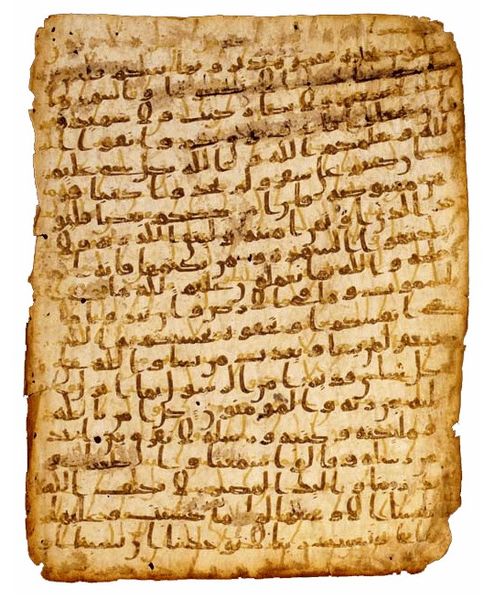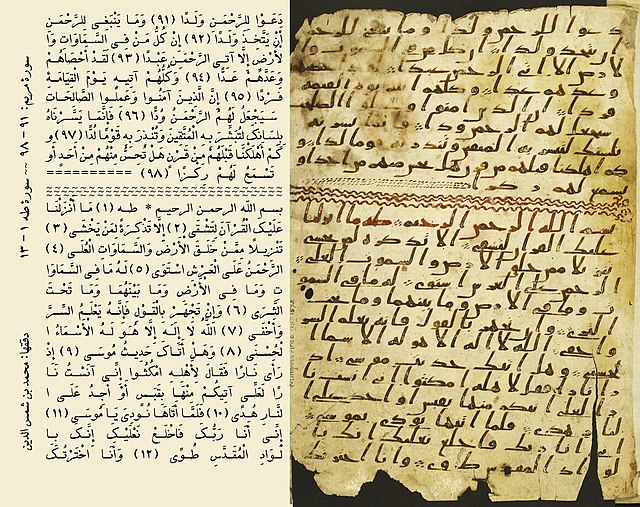Birmingham Quran manuscript
The Birmingham Quran manuscript is a single sheet of parchment on which two leaves of an early Quranic manuscript or muṣḥaf have been written. In 2015, the manuscript, which is held by the University of Birmingham, was radiocarbon dated to between 568 and 645 CE. It is part of the Mingana Collection of Middle Eastern manuscripts, held by the university's Cadbury Research Library.
folio 1 verso (right) and folio 2 recto
Comparison of a 20th-century edition of the Quran (left) and the Birmingham Quran manuscript (right)
Close-up of part of folio 2 recto, showing chapter division and verse-end markings in Hijazi script
Early Quranic manuscripts
In Muslim tradition the Quran is the final revelation from God, Islam's divine text, delivered to the Islamic prophet Muhammad through the angel Jibril (Gabriel). Muhammad's revelations were said to have been recorded orally and in writing, through Muhammad and his followers up until his death in 632 CE. These revelations were then compiled by first caliph Abu Bakr and codified during the reign of the third caliph Uthman so that the standard codex edition of the Quran or Muṣḥaf was completed around 650 CE, according to Muslim scholars. This has been critiqued by some western scholarship, suggesting the Quran was canonized at a later date, based on the dating of classical Islamic narratives, i.e. hadiths, which were written 150–200 years after the death of Muhammad, and partly because of the textual variations present in the Sana'a manuscript. With the discovery of earlier manuscripts which conform to the Uthmanic standard however, the vast majority of Western revisionist theories regarding the historical origins of the Quran have fallen out of favor and been described as "untenable".

Sura al-Baqarah, verses 282–286, from an early Quranic manuscript written on vellum (mid-late 7th century CE)
The recto of the first folio of codex Parisino-petropolitanus.
Close up of part of folio 2 recto of Birmingham Quran manuscript
Sana'a manuscript






